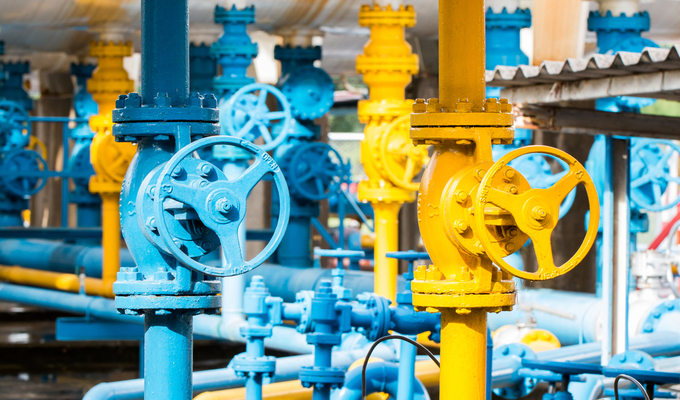Naftogaz proposes NEURC to change method for setting gas transportation tariffs
Naftogaz Ukrainy on July 13 appealed to the National Commission for Energy and Housing Utilities Services Regulation with the proposal to change the methodology for calculating gas transportation tariffs, which could lead to a reduction in gas tariffs from 2019, the press service of Naftogaz has said.
"The proposed changes aim at bringing the methodology in conformity with requirements of Commission Regulation (EU) 2017/460, which was adopted in March 2017 and has established a network code on harmonized transmission tariff structures for gas. Implementation of the new methodology could result in a reduction of cost of gas transit via Ukraine by 2.3 times (in comparison with costs based on current regulated tariffs) starting from 2019, provided certain conditions are met," the press service noted.
"Naftogaz group supports the implementation of EU regulatory framework for gas market in Ukraine, and with this proposal takes into account the intention of the Energy Community Secretariat to make implementation of Regulation 2017/460 mandatory for all Contracting Parties of the Energy Community," reads a report on the company's website.
"Changes to the methodology were developed by JSC Ukrtransgaz and a team of international experts with extensive experience in advising national energy market regulators in Europe," it says.
Naftogaz proposed to the regulator to implement the amendments to the tariff setting methodology and apply it to calculate tariffs for the new five-year regulatory period starting from 2019.
Among other proposed changes, the submission provided for bringing the methodology of allocation of allowed revenues between tariffs for entry/exit points in conformity with requirements of Regulation 2017/460, adding reconciliation for under-recovery and over-recovery of allowed revenues in the current regulatory period during next two regulatory periods, clustering of some entry and exit points (inter alia, entry points for gas production in Ukraine, entry interconnection points on the Eastern border, entry interconnection points on the Western border, exit points to distribution system operators and direct consumers).
"In addition to the tariff methodology changes, Naftogaz has submitted to the NEURC an indicative calculation of tariffs for entry and exit points in accordance with such proposed changes, and based on long-term regulated parameters approved for the current regulatory period. These parameters include, inter alia, regulated rate of return on assets and efficiency coefficients for operating costs," according to the document.
"For the calculation of tariffs Naftogaz has used a scenario of almost full utilization of capacity of the Ukrainian gas transmission system on exit points to the EU, i.e. with gas transit at the level of 141 billion cubic meters per annum (equal to factual transit volumes in 1998). Such scenario can be possible if Nord Stream 2 is not built and if transit of gas produced by Russian private companies and companies from Central Asia is unblocked by Russian side," it says.
"Based on this scenario, the average cost of gas transit through the territory of Ukraine in the next regulatory period, converted from capacity-based tariffs into volume- and distance-based tariff, would be approximately $2.17 per 1,000 cubic meters per 100 km (including VAT and fuel gas component)," it reads.
Such tariff is 20% less than the transit tariff based on the existing transit contract between Naftogaz and Gazprom, and 2.3 times less than the average cost of gas transit according to the regulated entry/exit tariffs established by the NEURC in December 2015. Furthermore, such tariff is lower than the expected average cost of gas transmission per 100 km through Nord Stream 2. Such comparison reinforces the attractiveness of the Ukrainian gas transit route and raises further doubt regarding the economic rationale for Nord Stream 2.
Under the same parameters, the tariffs for domestic entry points for the Ukrainian gas producers are estimated at UAH 127 per 1,000 cubic meters including VAT, and at UAH 136 per 1,000 cubic meters including VAT for domestic exit points to distribution systems and direct consumers.
Under other parameters (inter alia, with respect to the expected volumes of booked capacities), the estimated tariffs should change accordingly. In particular, the adjustment procedure provided for by the methodology envisages a review of tariffs in case of changes in the forecasted volumes of booked capacities.
"In addition to the submitted proposed changes to the tariff methodology, Naftogaz Group plans to develop a proposal for the consideration by the NCER with respect to multiples applied to reference tariff (which take into account the duration of capacity booking), and a proposal about conditions of using discounts for capacities with restrictions," according to the post.









